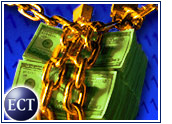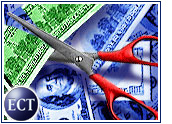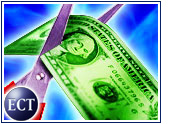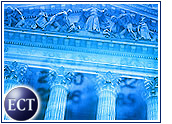
Remember when people actually wondered if there would be a dot-com shakeout?Remember when you were Chicken Little if you displayed any anxiety about the New Economy?
When the sky finally fell — and fell hard — you were not alone if you were caught by surprise. After all, most analysts and investors were.
However, a look back to 1999, to see how much evidence there was of the high-tech shakeout before it actually hit, makes the fact that so many investors ignored the signs even more startling.
For example, while the Nasdaq Composite stock index is not a flawless indicator of dot-com investor confidence, it is worth noting that the index rose 12.5 percent, from 2966.34 to 3336.16, in November 1999.
During that month, researchers at the Gartner Group released one of their periodic studies on e-commerce. One columnist called the report both “dour” and “curious.” Now, it would be more likely to be termed prescient.
Not Crying Wolf
The report said that e-business would reach a peak in 2000, followed by a quick plunge into a multiyear slump from 2001 through 2004, leading up to a slow, unimpressive, incremental recovery.
Of course, one study was not going to be enough to cause investors to switch gears. That same month, another report reacted to fluctuations in Amazon’s stock price, noting that stockholders still reacted positively to each new Amazon announcement and appeared ready to stay the course with the mighty e-tailer.
Many people speculated that profits did not matter at all in the constantly growing New Economy — that only brand mattered. As a result, dot-com investment continued.
Pre-Y2K Boldness
In December 1999, more e-commerce warning signs emerged. Jeffrey E. Garten of the Yale School of Management wrote that he was troubled about overvalued online businesses.
“The new dot-coms in the tech sector seem to derive their validations not from an ability to generate profits in any foreseeable time frame, but from intangibles like the promise of even larger networks of customers — an untested business model,” Garten said.
Around the same time, Lehman Brothers Holdings predicted that holiday season failures would cause online merchants to fold or go up for sale at a rapid rate in the new year. A study by Jupiter Communications helped explain why: consumer fears that Web merchants would run out of products — or deliver them too late for the holiday — were diminishing online shopping.
Most investors were not listening. By the end of 1999, the Nasdaq rose to 4069.31, a 21.9 percent increase for the month of December and a 37.1 percent increase since November 1st.
Shakeout Gains Ground
After Y2K’s New Year, the shakeout started to take hold of companies with recognizable names in e-commerce.
Software e-tailer Beyond.com announced that it was restructuring its business and cutting its work force by 20 percent. Also in January, online superstore Value America announced a major corporate reorganization in the wake of a stock price that had fallen to US$5.75 from a high of $74.25 in April 1999.
By February, some industry observers were contending that the recent lack of enthusiasm for such high-profile names as eToys, Theglobe.com and iVillage offered evidence that a shakeout had truly begun.
The Nasdaq? It foundered some in January, falling 3.1 percent to 3940.35, but then zoomed 19.2 percent in February to 4696.69.
Denial Reigns
How could the Nasdaq continue to rise so freely? Again, there is more to the Nasdaq than dot-coms. However, many investors and analysts were still finding reasons to discredit the idea of a shakeout.
Profitability, now the keyword of anyone who evaluates dot-coms, was still treated by some as a less important factor in the New Economy than revenue.
In mid-day trading on March 10th, the Nasdaq hit its all-time high of 5132.52 — an 88 percent increase from October 1st, 1999. Then, and only then, did a true swing in momentum occur. Enough investors were finally questioning the potential of the New Economy to begin to crack the market.
Signs of the shakeout began penetrating the public consciousness more easily from that point on. At the end of March, announcements that e-tailers Gloss.com and Beautyscene.com were up for sale were directly interpreted as a sign of the shakeout.
All Shook Up
In April, when Web incubator Safeguard Scientifics said that it would stop investing in business-to-business (B2B) companies, it helped galvanize a feeling that the dot-com shakeout was not confined to the business-to-consumer (B2C) arena.
Later that month, Forrester Research released a report saying that increasing competition, falling stock prices and weak financial performance were going to kill off most companies now doing retail business on the Internet by the end of 2001. The prediction was not much different from Gartner’s November 1999 report. This time, though, more investors paid attention.
So, where does that leave us? On August 19th, 1999, the Nasdaq closed at 2621.43. Monday, the Nasdaq closed at 2624.52.
You do the math.![]()





























































Social Media
See all Social Media